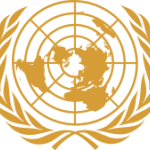- Отрасли: NGO
- Number of terms: 31364
- Number of blossaries: 0
- Company Profile:
The United Nations Organization (UNO), or simply United Nations (UN), is an international organization whose stated aims are facilitating cooperation in international law, international security, economic development, social progress, human rights, and the achieving of world peace.
Waste-water treatment of a physical and mechanical nature that results in decanted effluents and separate sludge. Mechanical processes are also used in combination with biological and advanced unit operations. Mechanical treatment includes processes such as sedimentation and flotation. See also biological treatment technology and advanced treatment technology.
Industry:Environment
Substances in air that could, at high enough concentrations, harm human beings, animals, vegetation or material. Air pollutants may thus include forms of matter of almost any natural or artificial composition capable of being airborne. They may consist of solid particles, liquid droplets or gases, or combinations of these forms. See also hazardous air pollutants.
Industry:Environment
Natural resource and environmental accounting of stocks and changes in stocks in physical (non-monetary) units, for example, weight, area or number. Qualitative measures, expressed in terms of quality classes, types of uses or ecosystem characteristics, may supplement quantitative measures. The combined changes in asset quality and quantity are called volume changes.
Industry:Environment
Measure of broadly defined economic welfare. It applies a number of adjustments to personal consumption adding desirable services such as household production and subtracting regrettable expenditures, for example, for commuting, automobile accidents, and water, air, soil and noise pollution and other welfare losses, for example, from unemployment (Daly and Cobb, 1989).
Industry:Environment
Measure of the effort to create new wealth. It is the residual of gross domestic product (GDP) less consumption, depreciation of produced assets, and the costs of drawing down natural resources (World Bank, 1995). Negative genuine savings is considered as an indicator of non-sustainable economic performance. See also Environmentally-adjusted Net Capital Formation (ECF).
Industry:Environment
Number (weight) of fish in a stock that can be taken by fishing without reducing the stock biomass from year to year, assuming that environmental conditions remain the same. Different levels of s.c. exist for different stock sizes. Maximum s.c. is defined in reference to a size (and composition) of a stock which makes the natural growth of the stock equal to this maximum.
Industry:Environment
Waste-water treatment employing aerobic and anaerobic micro-organisms that results in decanted effluents and separate sludge containing microbial mass together with pollutants. Biological treatment processes are also used in combination or in conjunction with mechanical and advanced unit operations. See also advanced treatment technology and mechanical treatment technology.
Industry:Environment
Incorporation of environmental externalities (imputed environmental costs) into the budgets of institutional units. Typically prompted by economic instruments (fiscal incentives and disincentives of environmental subsidies, effluent charges, tradable pollution permits or user fees). Environmental cost accounting permits to set the initial level of these internalization instruments.
Industry:Environment
Pollution sources that are diffused and without a single point of origin or not introduced into a receiving stream from a specific outlet. The pollutants are generally carried off the land by storm-water run-off. The commonly used categories for non-point sources are agriculture, forestry, urban areas, mining, construction, dams and channels, land disposal and saltwater intrusion.
Industry:Environment
Primitive photosynthetic organisms comprising 1,500 or fewer species. In addition to being photosynthetic, many species can also fix atmospheric nitrogen, that is, transform the gaseous nitrogen of the air into compounds that may be used by living cells. They are also called cyanophytes. Cyanophyte blooms are especially common in waters that have been polluted by nitrogen wastes.
Industry:Environment
